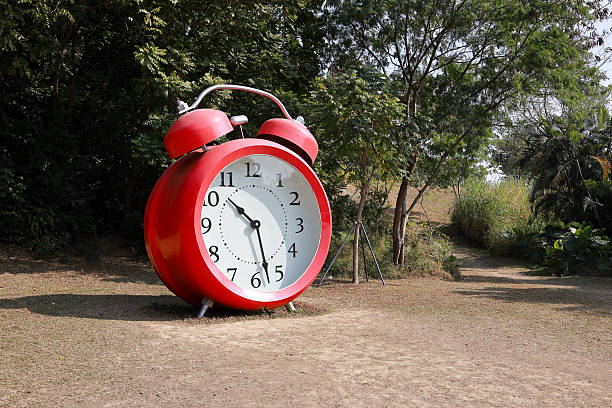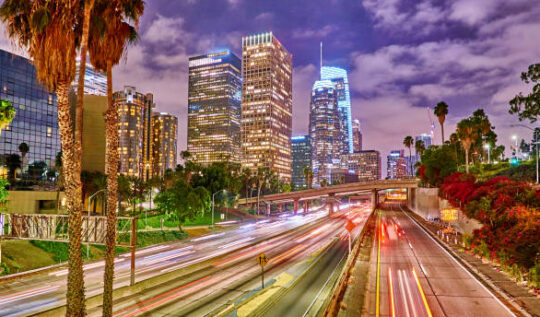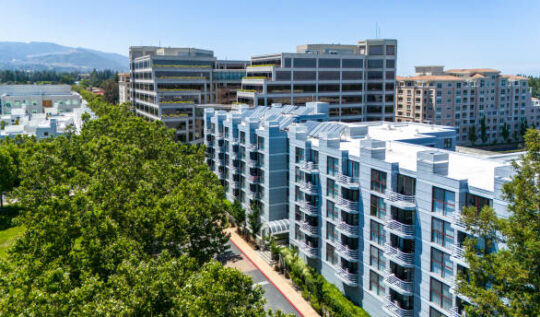Guide to Filling Out the City Planning Application Form in Los Angeles
Planning a development project in Los Angeles or nearby cities? Whether you’re seeking a zone change, a subdivision, or a conditional use permit, the City Planning Application Form in Los Angeles is the official starting point of the discretionary review process. Filling it out may seem straightforward—but a single error or omission can cause months of delay.
Table of Contents
ToggleIn this two-part guide, the land use experts at JDJ Consulting Group walk you step-by-step through the City Planning Application Form. You’ll learn how to complete each section accurately, what supporting documents to gather, and how to avoid common filing pitfalls.
Common LA Planning Applications
This pie chart illustrates the most frequently filed planning applications in Los Angeles.
Why the City Planning Application Form Los Angeles Matters
The form isn’t just paperwork. It’s your formal request to change how land is used. City planners, zoning administrators, and decision-makers will use the application as a roadmap to evaluate:
What changes you’re requesting
Whether your proposal fits local zoning and planning goals
What technical or legal reviews are required
Whether your project qualifies for CEQA exemptions or needs an EIR
Filing the form correctly can save you weeks—or even months—of delays.
When Do You Need to File This Form?
You’ll need to submit a City Planning Application Form if your project involves any of the following:
| Triggering Actions | Requires Planning Application? |
|---|---|
| Changing zoning or land use | Yes |
| Requesting a Conditional Use Permit (CUP) | Yes |
| Creating or adjusting lot lines | Yes |
| Seeking height, parking, or setback relief | Yes |
| By-right construction with no variances | Not usually |
Even small additions may need review if located in overlays or specific plans.
Before You Start: Things to Prepare
Before diving into the form, you should gather:
Assessor Parcel Number (APN)
Legal description from deed or title report
Site plan and elevation drawings
Property owner authorization (if you’re not the owner)
CEQA environmental documentation
Fee estimates (some cities require prepayment)
JDJ’s land-use team can help confirm which documents are required based on your jurisdiction and project type.
Section-by-Section Guide to Completing the Form
Let’s break down the City Planning Application Form section by section. This guide focuses on the version used by the City of Los Angeles, but similar fields appear in Burbank, Glendale, Pasadena, and most Southern California cities.

1. Applicant Information
In this section, you’ll provide contact information for:
The applicant (you or your representative)
The property owner (must match title)
The agent or representative (if different from applicant)
Include names, phone numbers, email addresses, and physical mailing addresses.
2. Project Location Details
Here, the form asks for your project’s location:
Site address
Cross streets
Community Plan area
APN (Assessor Parcel Number)
Legal description – Lot/Tract numbers, block, etc.
You can find most of this information through:
Your title report or deed
The County Assessor’s parcel search
ZIMAS (for LA properties) → http://zimas.lacity.org
Be precise. A typo in APN or tract info can result in an automatic rejection.
Filing to Approval Timeline
3. Requested Entitlement Actions
This section is where most applications go wrong.
You must identify exactly what actions you are requesting. Options may include:
Height District Change (HD)
General Plan Amendment (GPA)
Zoning Administrator’s Adjustment (ZAA)
Parcel Map (PM) or Tract Map (TT)
If you’re unsure what you need, don’t guess. Consult a land-use expert.
At JDJ, we analyze your goals and zoning constraints to select the right entitlement mix and maximize project viability.
4. Project Description
This is your elevator pitch in planning terms.
Be concise but detailed enough for staff to understand what you’re proposing. Include:
Demolition (if any)
Number of units or square footage
Use type (residential, mixed-use, commercial)
Number of stories and height
Parking details
Green building features (if applicable)
Example: “Demolition of an existing commercial structure and construction of a 5-story, 32-unit mixed-use building with 4,500 square feet of ground-floor retail, 45 residential parking spaces, and a 15% affordable housing set-aside.”
5. Site Details
Cities want a technical overview of your site, including:
Total lot area (in square feet or acres)
Floor Area Ratio (FAR) – existing and proposed
Zoning designation (e.g., C2-1VL, R3, etc.)
Height district
Current land use designation (per General Plan)
Overlay zones (e.g., TOC, SNAP, HPOZ)
Many of these can be found in zoning portals like ZIMAS.
6. Related Case Numbers
If your property has been part of any previous planning or zoning applications, you must disclose them here.
Provide case numbers, case types, and a brief description
Include approved variances, CUPs, or plan approvals
Why it matters: Past decisions may affect what the city will or will not approve.
Before You File: Required Documents
- 📌 Assessor Parcel Number (APN)
- 📌 Legal description from deed/title report
- 📌 Site plan and elevation drawings
- 📌 Property owner authorization letter
- 📌 CEQA documentation (Exemption or Screening Form)
- 📌 Preliminary fee estimate/payment proof
💡 Tip: JDJ can confirm exactly what documents you need based on your project and city.
7. Owner’s Consent
Every application must be signed by the legal property owner. In some cases, a wet ink notarized signature is required.
If the applicant is not the owner, include a signed and dated letter of authorization
For corporate entities, provide proof of signing authority
JDJ handles this paperwork for you—ensuring it’s notarized and submitted correctly the first time.
8. Signatures & Declarations
The applicant and owner must certify that:
The information in the form is true and correct
They understand city review processes
They consent to site inspections and public hearings (if needed)
Some cities require notarization at this step as well.
9. Supporting Documents Checklist
Most cities attach a checklist of required items that must accompany your form. Common documents include:
| Supporting Document | Purpose |
|---|---|
| Site Plan | Shows building footprint, access, etc. |
| Floor Plans & Elevations | Illustrates proposed design |
| Photos of existing site conditions | Helps planners understand context |
| Environmental Clearance Forms | CEQA screening |
| Mailing labels (for noticing) | Required for public hearings |
| Filing Fee Receipt | Proof of payment |
Where and How to File the City Planning Application
In most cities, the planning department accepts applications via:
Online portals (e.g., LA’s DSC Online Portal)
In-person appointments at the city’s Planning Public Counter
Drop-off submissions with digital backups via USB or email
Some cities require that you schedule an appointment to submit the application, especially for discretionary cases like CUPs or zone changes.
Electronic vs. Paper Filing
| City | Filing Type |
|---|---|
| Los Angeles | Mostly digital (DSC Portal) |
| Burbank | Paper and PDF |
| Glendale | In-person only |
| Pasadena | In-person with USB upload |
JDJ Consulting manages both the physical paperwork and digital uploads for clients to ensure smooth submittal across jurisdictions.
Filing Fees: What to Expect
Each case type has its own fee schedule based on the complexity of the review. Typical costs include:
| Case Type | Estimated Fee (LA) |
|---|---|
| Conditional Use Permit (CUP) | $13,000 – $15,000+ |
| Zone Change (ZC) | $12,000 – $17,000+ |
| Site Plan Review | $5,000 – $9,000 |
| Parcel Map/Tract Map | $10,000 – $20,000+ |
| CEQA Clearance (MND/EIR) | $8,000 – $100,000+ |
JDJ provides a customized fee estimate during the pre-application phase and ensures clients bring the right payment method for filing (credit card, check, or online portal).
After You File: What Happens Next?
Once your application is submitted, the review process begins. Here’s a typical timeline for most discretionary planning applications:
1. Case Number Assigned
You’ll receive a case number within 1–3 days. This number allows you to track your project online.
2. Planner Intake Review
City staff performs an initial completeness check. If anything is missing or unclear, they will issue an “Incomplete Letter” with corrections.
3. Case Assignment
A city planner is officially assigned to your case. This person will be your main point of contact and reviewer.
4. Public Noticing (If Required)
If your project involves a public hearing (like a CUP or tract map), the city will:
Require you to mail notices to property owners within a 500-ft radius
Publish the notice in a newspaper or online
Post a public notice sign on the property
5. Hearing or Staff-Level Decision
Depending on your case, the decision may be:
| Case Type | Decision Maker |
|---|---|
| Zoning Administrator Adjustment | Zoning Administrator (ZA) |
| Conditional Use Permit | ZA or Area Planning Commission |
| Zone Change or GPA | City Planning Commission / Council |
| Tract/Parcel Map | Advisory Agency or Planning Commission |
Timelines vary based on the case type, environmental review, and city staffing levels. On average:
Simple adjustments: 2–4 months
CUPs, site plan reviews: 4–6 months
Zone changes, GPAs: 8–12 months or more
EIR-level projects: 12–24 months
Delays are common if required documents are missing or if the project faces community opposition.

How to Track Your Case Status
Cities offer online tracking tools where you can monitor case progress:
Los Angeles (ZIMAS + Planning Case Info): zimas.lacity.org
Burbank: burbankca.gov/planning
Pasadena: cityofpasadena.net
JDJ Consulting tracks every submission closely and maintains regular communication with case planners.
Common Pitfalls – and How We Prevent Them
| Mistake | JDJ Solution |
|---|---|
| Missing owner signature | We obtain notarized authorization upfront |
| Wrong entitlement requested | We analyze zoning + General Plan in advance |
| Incorrect legal description or APN | We verify with title docs and ZIMAS |
| Skipped noticing or mailing requirements | We handle label creation + noticing timelines |
| Poor project description | We draft clear, code-aligned summaries |
With JDJ, you don’t just file a form—you submit a strategic, complete case that tells your project’s story.
Preparing for Hearings (If Required)
If your case includes a public hearing, we help you:
Prepare presentation materials
Coordinate with the assigned planner
Communicate with neighbors and stakeholders
Present at Zoning Administrator or Planning Commission hearings
We also coach clients on what to expect, who will be in the room, and how to respond to questions or objections.
What Happens After Approval?
Once approved, your project may still need to:
Clear conditions of approval
Record any entitlement documents
Begin the plan check and permit process with LADBS or your local building department
JDJ can remain involved to assist with next steps like permit expediting and agency coordination.
Why Developers Trust JDJ Consulting Group
Our clients don’t come to us for paperwork. They come to us for results.
At JDJ Consulting Group, we guide you from pre-submittal strategy through post-approval implementation. We simplify the process and help you avoid setbacks—so your project keeps moving forward.
We help with:
Feasibility & entitlement strategy
Application preparation and filing
CEQA coordination
Community and stakeholder outreach
Permit expediting after approval
Our job is to help you secure approvals faster, with fewer surprises.

Ready to File Your City Planning Application?
Whether you’re filing a CUP, map, zone change, or Site Plan Review, JDJ Consulting Group is ready to help you:
Know exactly what to request
Avoid mistakes that cost time and money
Build a clean, persuasive application
Move from plan to permit with confidence
Let’s Take the Stress Out of the Planning Process
We know the city planning process can feel overwhelming—but you don’t have to face it alone. At JDJ Consulting Group, we’re here to walk you through every step, answer your questions, and make sure your project is set up for success.
Whether you’re just starting to explore your options or ready to submit your application, we’re ready to help.
Call us at (818) 233‑0750 or reach out online to schedule a time to talk. Let’s move your project forward—together.
Ready to File Your City Planning Application?
Let JDJ Consulting Group help you avoid costly errors and delays. From zoning strategy to application prep, we’ll walk you through every step.
📞 Schedule Your ConsultationOr call us at (818) 233‑0750
FAQs: Filing the City Planning Application Form in Los Angeles
What is a City Planning Application Form?
A City Planning Application Form is an official document used to request land use approvals or discretionary entitlements for development projects. It helps the planning department understand your proposal and initiate the formal review process.
It’s required for actions like zone changes, conditional use permits, tract maps, and more.
The form typically includes project details, zoning data, and applicant information.
When do I need to file a City Planning Application?
You need to file the application when your project requires any discretionary action from the city, such as:
A zoning change or variance
A new tract or parcel map
A conditional use permit (CUP)
Site plan review for projects over a certain size
Requests related to the California Environmental Quality Act (CEQA)
Not sure if your project qualifies? Schedule a meeting with JDJ Consulting official to review your entitlements.
How do I know which entitlements to request?
Determining the right entitlements involves analyzing your site’s zoning, general plan designation, overlays, and project goals. Incorrectly selecting your entitlements can lead to delays or denial.
Here’s what you should review:
Current zoning and land use (via ZIMAS for LA)
General Plan Land Use Map
Height districts and special overlays (e.g., TOC, HPOZ)
What documents must I submit with the application?
Along with the form, most cities require a full application packet, which includes:
Site plan, floor plans, and elevations
Legal description and APN
Owner authorization
Photos of existing conditions
CEQA environmental clearance forms
Noticing materials (labels, radius maps)
For a full checklist tailored to your city, see our permitting services overview.
Can I submit the application online?
Yes, many cities—including Los Angeles—now accept digital submissions.
LA uses the DSC Online Portal
Pasadena and Glendale may require in-person or hybrid submission
Some cities still accept only paper applications with USB backups
How much are City Planning Application fees?
Fees vary based on case type and project complexity. Here’s a general range for Los Angeles:
CUP: $13,000 – $15,000
Zone Change: $12,000 – $17,000
Parcel/Tract Map: $10,000 – $20,000+
CEQA Review: $8,000 – $100,000+
Cities often update fee schedules annually. You can check Los Angeles Planning’s Fee Schedule or contact us for an estimate.
How long does it take to get a decision?
Timelines vary, but here’s a typical range:
Simple adjustments: 2–3 months
CUP or Site Plan Review: 4–6 months
Zone Change or GPA: 8–12 months
Projects requiring EIRs: 12–24+ months
What is CEQA and how does it relate to my application?
CEQA—the California Environmental Quality Act—requires cities to assess environmental impacts of certain projects.
Depending on your proposal, the city may:
Grant a CEQA exemption
Require a Mitigated Negative Declaration (MND)
Trigger an Environmental Impact Report (EIR)
Do I need a public hearing for my case?
Public hearings are required for many discretionary cases, including:
Conditional Use Permits (CUPs)
Zone changes or General Plan Amendments
Tract or parcel maps
During the process, the city:
Sends notices to nearby property owners
Posts a public notice on-site
May require a hearing with the Planning Commission or Zoning Administrator
We guide you through the outreach and representation process to prepare for any hearing.
Can I update my application after filing?
Yes, but it depends on the stage of review. You may be able to:
Submit minor plan changes or corrections during early review
Add supplemental materials requested by staff
Refile or amend for major changes—though this may trigger new hearings
What happens after my application is approved?
Post-approval, you’ll need to:
Satisfy any conditions of approval
Record any required documents (e.g., covenants, maps)
Submit building plans to LADBS or your local permitting office
Begin permit expediting and construction timelines
Why should I work with JDJ Consulting Group on my planning application?
Filing a City Planning Application isn’t just paperwork—it’s strategic. At JDJ Consulting, we:
Guide you through every entitlement needed
Assemble a complete and accurate application package
Coordinate with city agencies and case planners
Represent you at public hearings and stakeholder meetings
Help you move from vision to approval with fewer delays
We’ve helped clients succeed in Los Angeles, Burbank, Pasadena, Glendale, and beyond.






When to Hire a Land Use Consultant Los Angeles | JDJ Group
August 7, 2025
[…] collaboration with LA City Planning, LADBS, Coastal Commission, and Housing […]